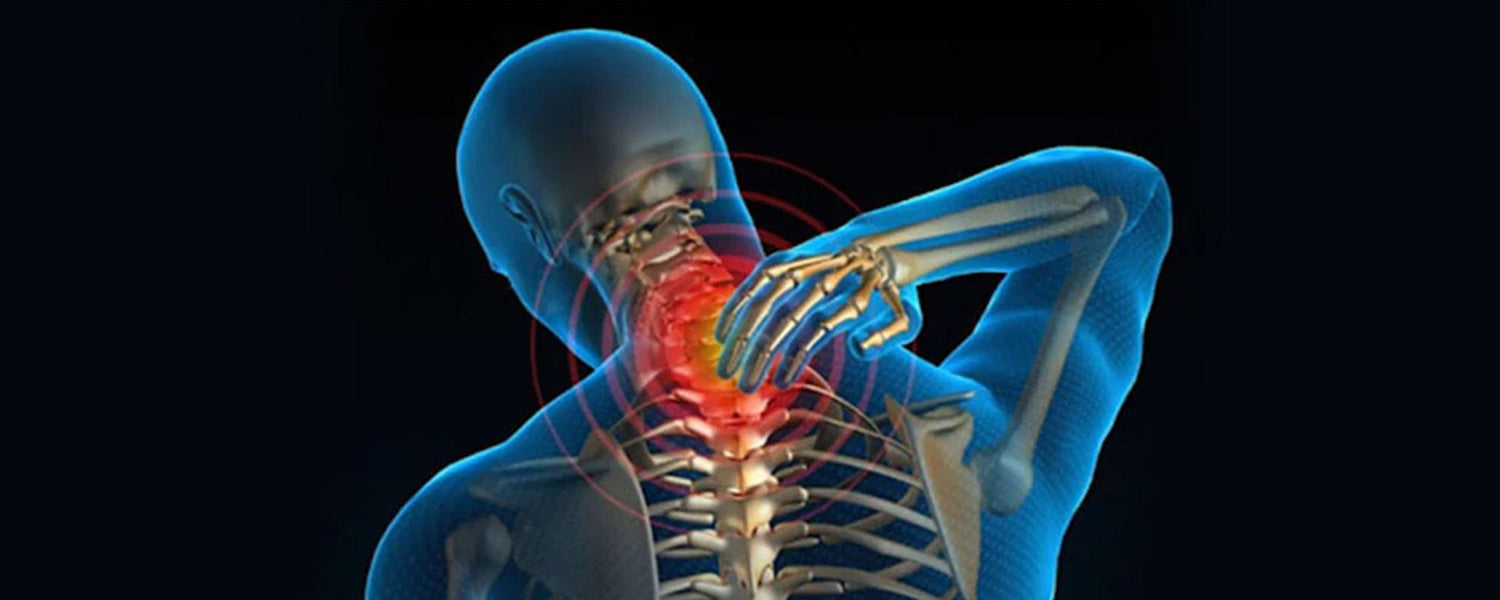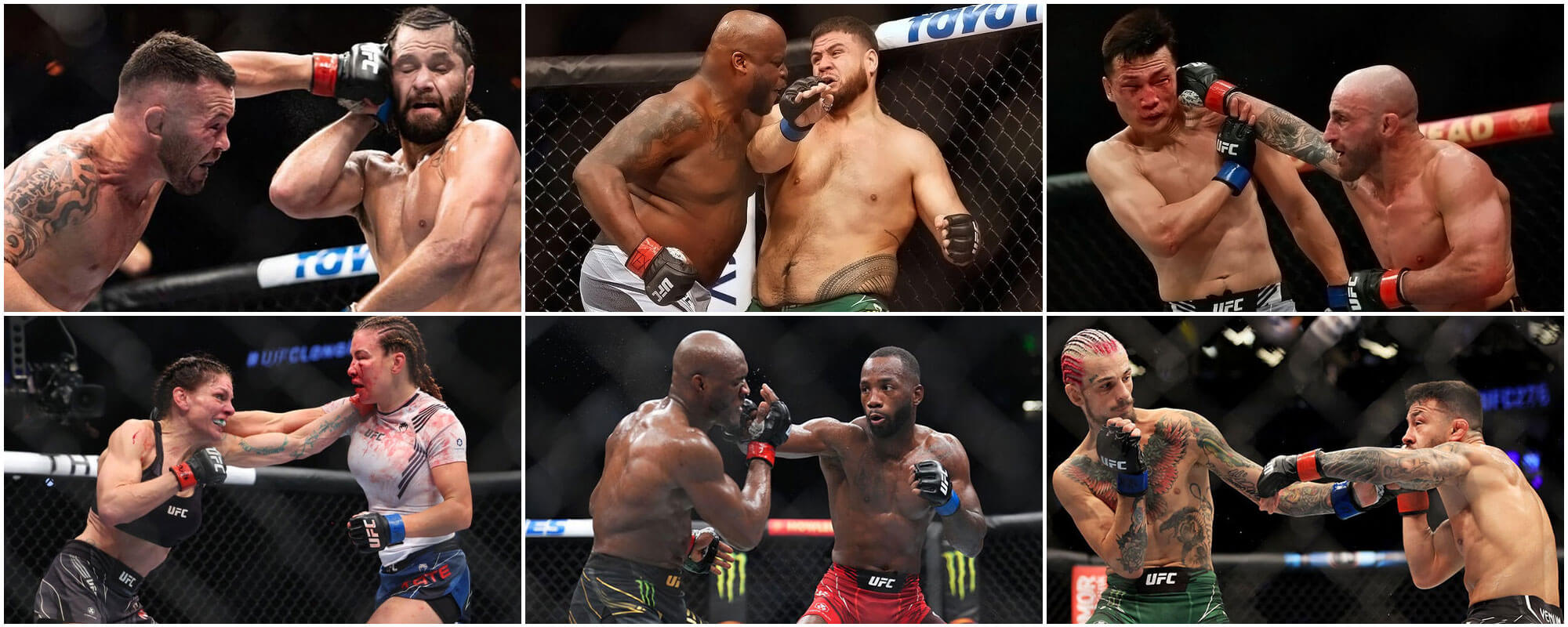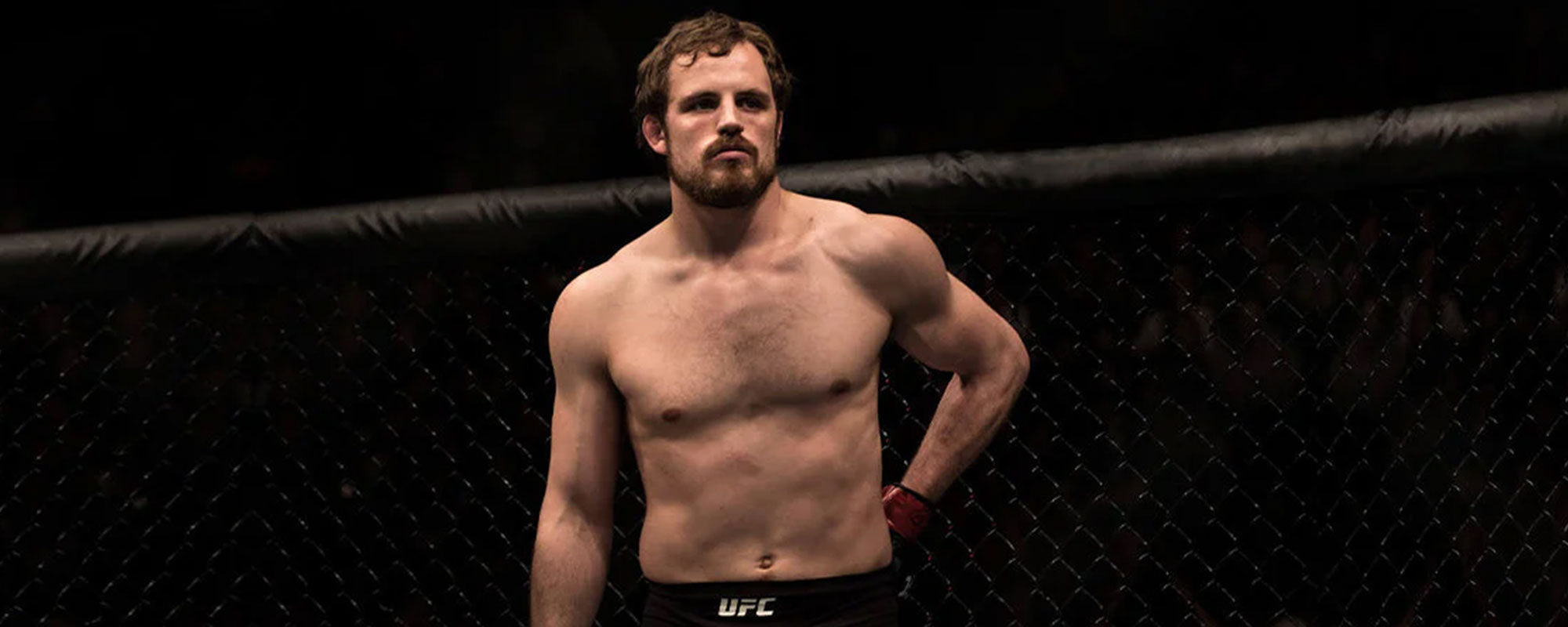Table of content
1. The Crucial Placement of Your Neck in BJJ Training
The neck is playing an important role in Brazilian jiu-jitsu. The human neck is the most important and vulnerable part of the spine. It is the flexible composition of tendons and ligaments. Tendons connect muscles with bones, whereas ligaments link bones. The physical attributes of the neck provide us with a wide range of movements to spot any kind of danger from many angles (up, down, side to side) and are a crucial part of our survival instinct.
But with extreme mobility comes great responsibility and vulnerability. We cannot stabilize our neck because it lacks the supporting infrastructure. For example, the spinal cord has twelve pairs of supporting ribs attached to it, but the neck is dangerously exposed to any sort of attack or pressure.
The destabilization of the neck gives us a huge advantage when it comes to mobility. It is our responsibility not to make this mobility a liability. The only support that is keeping the neck safe are muscles, cartilage, and small bones.
Because of the strategic positioning and the mobility, it is located in a sensitive position where any crucial crank, twist, choke or jolt can put the stabilization of your neck in danger.
2. Use of Neck In Grappling Sports
There is a famous posture tool/gadget called Iron Neck which is helpful in Football, wrestling, and other sports. Many other sports also use this technique to prevent any sore neck injury and attain maximum neck strength. Many MMA fighters and grapplers use this to relax and maintain their neck posture and to cope with the extreme conditions of the close-range fight.
These sudden jolts can rip the rubber-like tissues that connect the vertebrae of your neck. In most grappling sports, especially in BJJ, neck soreness can occur during training and fighting and can be dealt with by incorporating different techniques and scientific approaches applied by chiropractors or physical therapists.
Grappling sports and particularly Brazilian Jiu-Jitsu involve close-range combat and are full of artistically curated moves, techniques, and instant reflex training. These repetitive drills are focused on how to control your opponent by using your limbs, joints, and swift body movements to control the neck, arms, shoulder, hips, and other main joints of your body. The critical role of the neck is crucial in all grappling sports.
2.1. The Structure of Neck
There are seven bones or vertebrae in a neck and also called the cervical spine. In the past, fighters and grapplers used to train with extremely dangerous neck exercises like neck bridging and head buttering to achieve the maximum possible endurance and extend the movement of the neck. Although neck bridging is still a common exercise for strengthening the neck. The structure of the neck is not designed to bear heavy pressure or weight, even texting in a bad pose can put a strain on it.
Getting involved with a grappling sport like BJJ can put a lot of wear and tear on the sensitive muscle structure of your neck. When the structure of the neck undergoes extreme stress, weight, jolts, and choking attempts the vulnerable nervous system of the neck will instantly feel an overdrive and secure it into a painful yet protective twitch. It can take good enough time, therapy, and protective measures to convince the nervous system to be friendly again and release the neck from its protective spasm.
2.2. Jiu Jitsu and The Challenge of Sore Neck
Neck soreness and neck injuries are common in all jiu Jitsu and no one takes it lightly because it can cause major injuries in almost every support that involves running and fast motion. Neck pain is considered a common issue in BJJ but it can be prevented if coped with the right techniques under professional supervision.
3. Jiu Jitsu and Self Control
Jiu Jitsu is a compilation of an artistically curated set of slow, fast, tactical, and methodical repetitive movements that involve putting pressure on selected crucial points and in some cases can cause a serious injury. Jiu-Jitsu does not teach brutal use of these techniques on the opponent and this is the reason why the training of Jiu-Jitsu is highly focused on being in control of your nervous system even in extreme conditions. The purpose is to never put someone in danger of getting severely injured.
If you are a seasoned grappler or a white belt novice, you must have felt some degree of neck pain. The neck soreness in BJJ is more common than normally admitted. Let's explore together, is it inevitable to bear neck pain while training for BJJ? The primary focus in BJJ is to control and force your opponent to submit and because of its vulnerability, the neck is more often the target of the opponent. You can perceive it as bad news, but the good news is there are several ways and techniques you can not only address neck soreness but can also prevent any neck injury.
Neck soreness can be felt during drilling and sparring and can be dealt with without stopping your regular training. We have explained those techniques at length in this article. But if there is any chance of pinched nerve or stinger injury, you have to take it more seriously and address the cause under professional supervision.
4. Causes of Neck Soreness in BJJ
There can be multiple causes of neck strain, muscle tear, and neck soreness after a jiu-jitsu session. The common cause behind most of these issues is the peculiar structure of the neck, and when it is pushed or forced to go beyond the limit of its motion range, it results in neck soreness or injury in some cases. For instance, the guillotine move is commonly associated with neck injuries. Because it involves pushing the neck tissues far beyond their motion rage. Mostly after the severe guillotine choke, pain, numbness, stiffness, or pins can be felt in the arms.
You can also feel severe symptoms like sharp and increasing jolts of pain in the areas near the neck and shoulders. If your pain has restricted your movement, go to a specialist medical officer as soon as possible. In some cases, a fighter might go to an emergency room, use your best judgment. Always remember to sit down for catching a breath, but not for too long. You should keep moving, it will assist your recovery process.
5. Symptoms of Neck Injuries in BJJ
Before identifying these below-mentioned symptoms and applying the remedy, it is a prerequisite to consult a doctor or seek a professional’s advice.
5.1. Early Signs to Pay Attention
- Constant pain that became more intense
- Circling and pinching pain in your arms and legs
- Numbness or motionlessness in your arms and legs
- Trouble regulating your bladder
5.2. Vertebral and Carotid Artery Dissection
The symptoms of both injuries are somewhat similar but Vertebral Dissection is less common. It is a form of severe neck injury and can be caused by a rear naked choke and neck crank. An arm triangle choke can also result in a neck injury. That is why during the training it is always advised to tap out if caught in these situations.
Early symptoms of Carotid Artery Dissection are;
- Increasing pain in the areas of tonsillitis
- Headache in the area of the forearm
- Ptosis: Shutting of eyelids
- Unbearable pain in the head
Initial symptoms in vertebral artery dissection are:
- Neck pain
- Severe Headache: This pain is more severe than normal headaches
- Dizziness
- Diplopia: Blurry or double vision
- Dysphagia: Pain while swallowing
- Dysarthria: Difficulty in speaking and sudden jolts
- Nausea
- Nystagmus: Having no or less control over eye movement
- Numbness on any side of the face
- Ataxia: Poor control over the voluntary movements of the body
6. Other Causes of Neck Soreness in BJJ
Neck soreness is rather commonly reported by athletes who are fighting bouts or even sparring or rolling. Practicing Brazilian Jiu Jitsu involves strangling the opponent and pushing him to submit by applying chokes and triangles, especially around the neck. Every practitioner must have to incorporate some of these positions and moves in order to escape from the techniques of the opponent. Other common causes of neck soreness and neck injury are:
- Deep stacking
- Neck cranks
- Posting with the head
In most cases, it happens when a fighter gets caught in an uncomfortable position and severely stacked by the opponent. Other possibilities are when a fighter is trying to break free from the headlock or when a fighter tries to avoid rolling by posing on his head. In case of an injury, the first and foremost step should be determining the type of injury. Is it a muscular injury or a disc displacement?
If the pain or injury makes it hard to turn the neck, the chances are the issue might be in the muscles. Whereas, if the injury causes a tingling sensation, pain, jolts, or numbness in the shoulder or arm, the chances are there can be an issue in the discs. Always remember there is no justification for taking these kinds of symptoms lightly.0 You should seek medical attention and follow the recommendations of professionals.
7. How to Relieve Your Sore Neck in BJJ?
Experiencing a sore neck while sparring or rolling is almost a common issue in BJJ and in other grappling sports. Whenever the soft tissues of the neck got tingled, there are a few things you must do within the next 3 days:
- Reduce pain: Apply ice for the first few days for 20 minutes at intervals of two hours. It will reduce the soreness and pain.
- Mobilization: Mobilization of the neck is very crucial. Try to maintain some sort of movement in the neck area. After a few days try to increase the movement according to the advice of the medical professional.
- Restore function: Your inner motivation and resolve can make miracles. Try to get back to your normal routine as fast as possible.
- Avoid rolling for a few days: If there is constant soreness or pain in the neck, there is nothing wrong with stopping the rolling for a few days while you can continue light drilling.
- Train without Gi: Training without Gi can force your opponent to use some deadly techniques like a guillotine, head/arm locks, and chokes. Whereas, Gi chokes tend to leave fewer effects and can reduce the chance of severe injury and neck soreness.
- Try optimal cervical flexion motion: Bend your chin to touch your sternum. If there is no pain, sensation, or excessive effort in the neck, that means your neck is healthy. If there is some amount of pain felt in the neck then focus on the pain-free motion and retest after some time.
8. How to Prevent Neck Injuries in BJJ?
Another reason for a sore neck or neck pain during rolling and sparring is the natural inclination to compete with a bigger and stronger opponent. It is a highly commendable trait of any fighter, if he or she wants to push the limits and wants to challenge the comfort zone. But the crucial point is not to choose a person who doesn't know the limits. It should be someone who is well aware of your skill set and voluntarily agreed to let you spar with and allow you to submit anytime you want. Because you are now attempting to sail in the deep waters and you need someone to guide you through the process.
Another crucial thing is to ensure you are not only taking care of your neck muscles but also doing the required workouts to achieve the maximum mobility and endurance of neck muscles.
If you work on your neck muscles, you can prevent any neck soreness and injury. Although Jiu-Jitsu training also makes your neck stronger. These are some exercises that can be incorporated into your training:
- Neck Flexion
- Neck Extension
- Shoulder Shrugs
- Neck Lateral Bends
These are some of the reasons because of which mostly neck pains occur and the silver lining is not only they can be cured but you can prevent them by working on these preventive techniques:
- Neck strength
- Neck mobility
- Tap out when pushed beyond the limits
- Avoid inverting
- Try to achieve maximum cervical flexion motion
9. Modified BJJ Training for Sore Necked Athletes
The most asked question about the sore neck and training Jiu-Jitsu is, can you continue training BJJ with a sore neck or neck pain? The answer is simple and straight. Absolutely yes! Not only you can continue BJJ training with neck pain but it is in fact highly recommended. Just make sure to learn how to train BJJ with neck pain. Below are some of the recommended techniques from Stephan Kesting who is a leading jiu-jitsu Black belt trainer and has been practicing martial arts for 40 years and has no plan to stop doing what he loves to do.
- Temporarily Stop Training: The reason for the elimination of training is that the chances of landing on your head are drastically high and almost inevitable. You have to stick with the groundwork and it is the time you can master the legwork, you can master the legwork for controlling your opponent in the amount position.
- Eliminate Some Guards From Your Training: These guards are an open invitation to your opponent to put pressure on your neck, head, and shoulders. But remember you have a sore neck and you don't want to make it worse.
- These guards are half guard, inverted guard, deep half guard, rubber guard, and closed guard. For the time being eliminate these guards from your training.
- Practice Those Guards That Protect Your Neck: There are particularly two guards that don’t put too much pressure and are recommended for the protection of your neck. These include the butterfly guard and the spider guard.
- Try to Avoid Kneeling Guard Passes: In this situation, it is highly recommended that you always choose guard passing in a standing position instead of a kneeling position because there is always a chance of your collar pulling and it can put your head down and bend your neck. Refrain going for Bernardo Faria over/underpasses for a while.
10. Conclusion
Brazilian Jiu-Jitsu is a combination of 90% choking and 10% neck-cracking techniques. But if you have neck pain and some minor injury the ratio flips.
Do not try to fight it out on your own. Continue training and avoid those guards and positions which are dangerous for your neck that can increase the possibility of serious injury. The silver lining is you can absolutely continue training for BJJ with a sore neck, and neck pain, if you have a minor injury. You just have to act more vigilant and learn to tap out the moment you are in an uncomfortable position.












Leave a comment
This site is protected by hCaptcha and the hCaptcha Privacy Policy and Terms of Service apply.